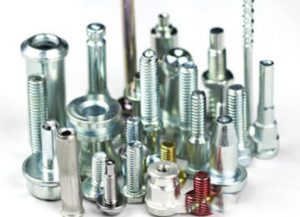How to Use a Fastener
Fasteners are essential components in construction, manufacturing, and every day repairs. They help hold materials together securely, ensuring stability and durability in various applications. Understanding how to use a fastener correctly can make your projects easier and more efficient.
As a professional fastener supplier, XINCHI is glad to share the different types of fasteners and provide a step-by-step guide on how to use them effectively.

Types of Fasteners
Before diving into the usage, it’s important to familiarize yourself with the common types of fasteners:
Nails: Simple and effective, nails are used primarily in woodworking.
Screws: These provide a stronger hold than nails and come in various sizes and types, including wood screws, machine screws, and self-tapping screws.
Bolts: Typically used with nuts, bolts are ideal for heavy-duty applications.
Rivets: Often used in metalwork, rivets are permanent fasteners that require special tools for installation.
Clips and Anchors are used for securing items like cables or masonry applications.
How to Use a Fastener
Step 1: Choose the Right Fastener
The first step in using a fastener is to select the appropriate type for your project. Consider the materials you are working with and the load they will bear. For example, use screws for joining wooden pieces and bolts for metal connections.
Step 2: Gather Your Tools
Depending on the type of fastener you are using, you will need specific tools. Common tools include:
– Hammer (for nails)
– Screwdriver (for screws)
– Wrench (for bolts)
– Drill (for pre-drilling holes, if necessary)
– Rivet gun (for rivets)
Step 3: Prepare the Material
Before fastening, ensure that the materials are clean and aligned properly. If you are using screws or bolts, consider pre-drilling holes to prevent splitting, especially in wood.
Step 4: Insert the Fastener
For Nails: Position the nail at a slight angle for better holding power. Use a hammer to drive it in, tapping gently to ensure it is straight.
For Screws: Place the screw in the pre-drilled hole and use a screwdriver to turn it clockwise. Apply steady pressure to ensure it goes in straight.
For Bolts: Insert the bolt through the holes of the materials being joined, then place a nut on the other side. Use a wrench to tighten the nut securely.
For rivets, insert the rivet into the holes in the materials. Use a rivet gun to compress the rivet until it flares out and secures the materials together.
Step 5: Check the Security
After fastening, check the connection to ensure it is secure. For screws and bolts, give them a final tightening if necessary. For nails, make sure they are flush with the surface or slightly below to avoid splinters.
Step 6: Finish the Surface
If you’re working on a visible surface, consider sanding down any protruding fasteners and applying paint or finish to conceal them and protect the material.
Using fasteners correctly is crucial for the success of your projects, whether you’re building furniture, repairing structures, or crafting. By selecting the right type of fastener and following the proper steps, you can ensure a strong, durable connection that will stand the test of time. Remember to prioritize safety by wearing appropriate gear and using tools correctly.
XINCHI is a trustworthy fastener company, especially in furniture nuts. We have a factory, founded in 2007. And we are the designated fastener supplier to“STAPLE”. As a trusted fastener supplier, Xinchi can offer a wide range of high-quality fasteners, including nuts, screws, bolts, rivets, washers, etc. If you want to know more about fasteners or want to wholesale fasteners, please feel free to contact us. And then our experienced and expert service team will reply to you as soon as possible.

